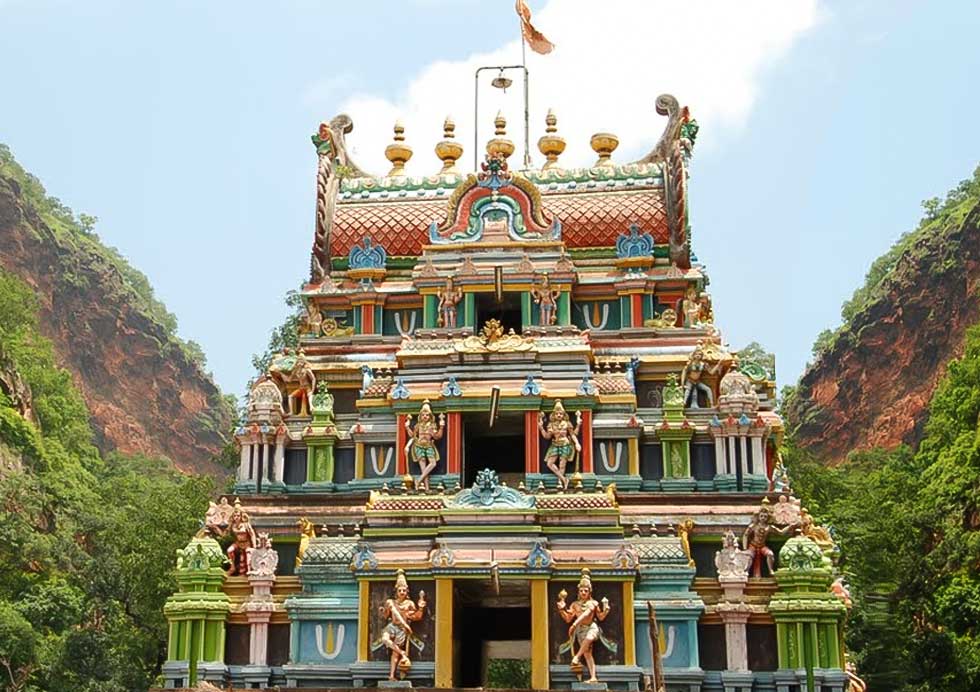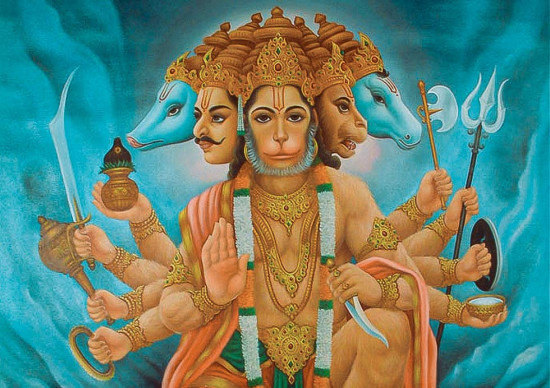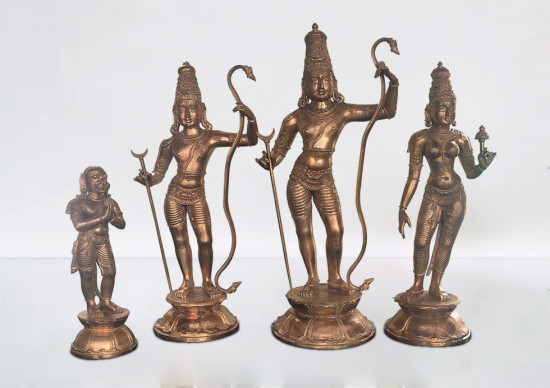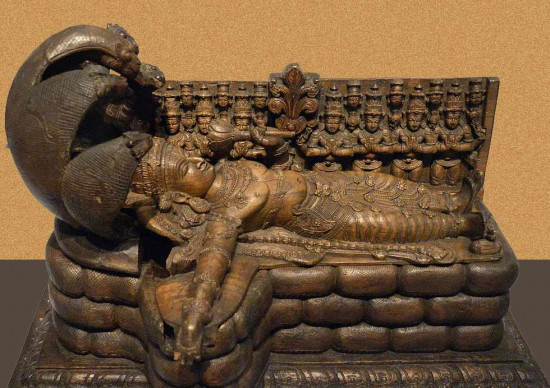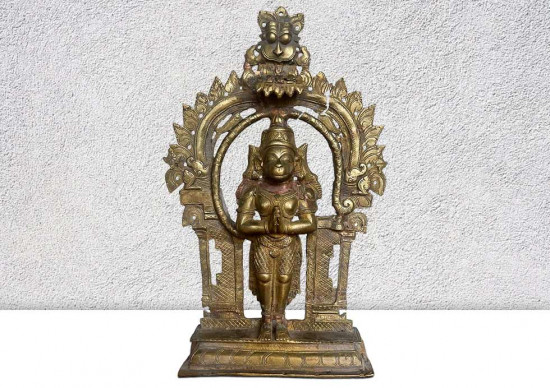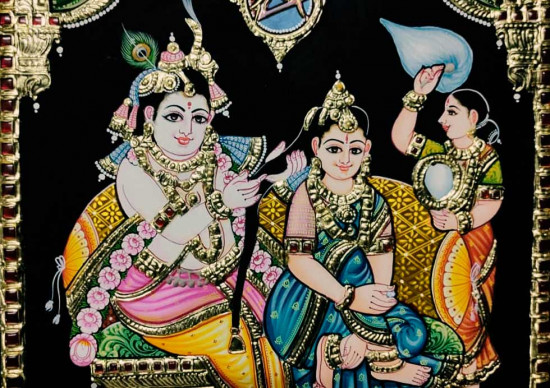Ahobilam, nestled in the heart of the Nallamala Forest range in Andhra Pradesh, India, stands as a testament to the rich tapestry of Hindu scripture and spirituality. This sacred pilgrimage site is renowned for being one of the 108 Divyadesams, a collection of revered Vishnu temples mentioned in the ancient scriptures. The epicenter of devotion in Ahobilam is dedicated to Lord Narasimha, the divine manifestation of Vishnu in a formidable half-man, half-lion form.
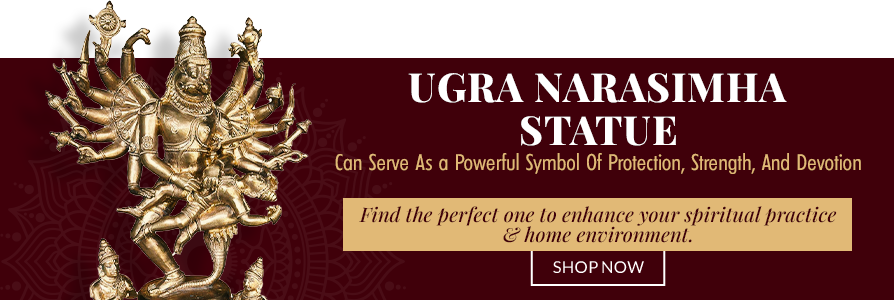
Legend about Ahobilam Temple:
The roots of Ahobilam’s sanctity trace back to the Puranas, specifically the Brahmanda Purana. According to legend, when the Devas witnessed the awe-inspiring form of
Lord Vishnu as Narasimha, a fusion of great strength (“Ahobala”) and the divine cave within which the sanctum now resides (“Ahobila”), they exclaimed in awe. This led to the dual nomenclature of the sacred place as Ahobilam. The very spot where Lord Narayana emerged from a stone pillar to vanquish the demon Hiranyakashipu is enshrined in this divine land.
Lord Narasimha:
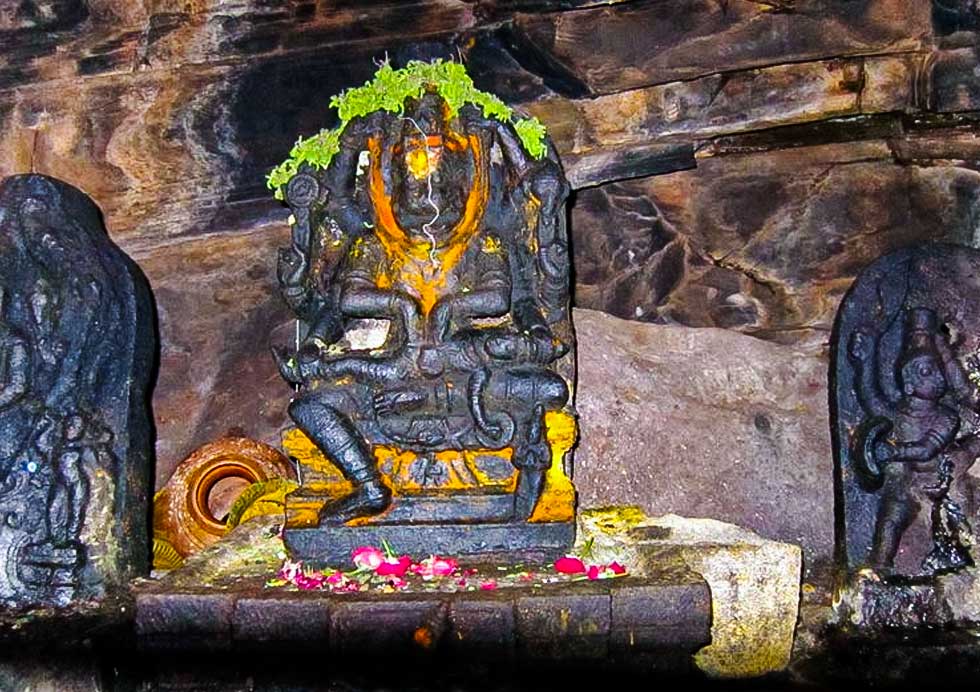
Lord Narasimha, the fourth avatar of Lord Vishnu, derives its name from the amalgamation of two Sanskrit terms: “Nara,” signifying man, and “Simha,” representing lion. This divine manifestation is characterized by a celestial form, wherein the body resembles that of a man, while the head and mane evoke the majestic image of a lion.
The story of Lord Narasimha is primarily associated with the epic tale of Prahlada and his demoniac father, Hiranyakashipu. According to Hindu scriptures, Hiranyakashipu, through severe penance and the subsequent boon from Lord Brahma, obtained the ability to not be killed by any man, god, or beast, neither indoors nor outdoors, neither during the day nor at night, and not on the ground or in the sky. This made him virtually invincible.
However, Hiranyakashipu’s son, Prahlada, was a devoted follower of Lord Vishnu, much to the dismay of his father. Hiranyakashipu’s attempts to dissuade Prahlada from his devotion to Vishnu proved futile, and in a fit of rage, he challenged Prahlada to show him where his Lord Vishnu resided.
In response to this challenge, Lord Vishnu manifested as Narasimha from a pillar in the palace, choosing the twilight hour (neither day nor night) and the threshold of the palace (neither indoors nor outdoors). He appeared in the fearsome form of a lion-headed man, Ugra Narasimha, to fulfill the conditions of Hiranyakashipu’s boon.
Lord Narasimha and Hiranyakashipu had a fierce fight, and in the end, Lord Narasimha won by defeating the demon king. This special appearance of Narasimha is a happy symbol because it shows that good always beats evil, and it assures the protection of the devotees.
Lord Narasimha is revered not only for his role in the story of Prahlada but also for his ability to manifest in various forms to protect his devotees and maintain cosmic order. The Nava Narasimha temples at Ahobilam, each dedicated to a specific form of Lord Narasimha, highlight the diversity of his manifestations and the multifaceted nature of the divine. Devotees often turn to Lord Narasimha for courage, protection, and the removal of obstacles in their spiritual journeys.
The Significance of Ahobilam:
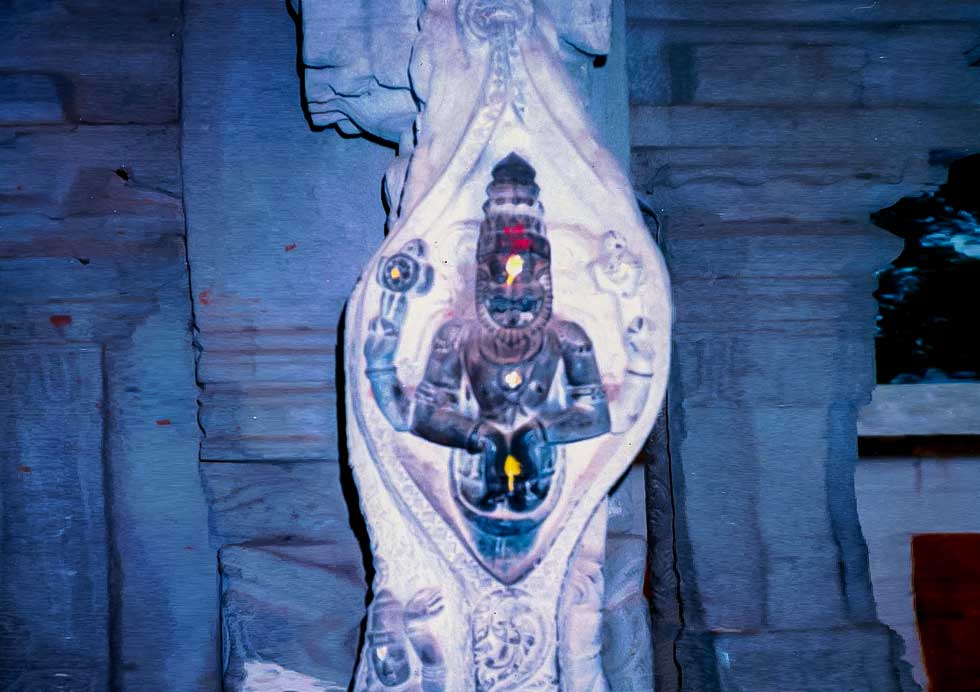
Ahobilam is believed to be the very spot where Lord Narayana emerged from a stone pillar to take the form of Narasimha and vanquish Hiranyakashipu. The pillar, known as Ugra Sthambha, later referred to as “Ukku Sthambha” in Telugu, incorrectly translating to the iron pillar, marks this sacred location. The name “Ahobilam” itself originates from the exclamations of the Devas who witnessed the divine manifestation – “Ahobala” (great strength) and “Ahobila” (great cave).
The temples in Ahobilam, dedicated to the various forms of
Lord Narasimha, serve as a living testament to this mythological episode. Pilgrims from far and wide visit Ahobilam to pay homage to the divine and experience the energy of Lord Narasimha, seeking protection and blessings in their spiritual journeys.
The Unique Forms of Lord Narasimha:
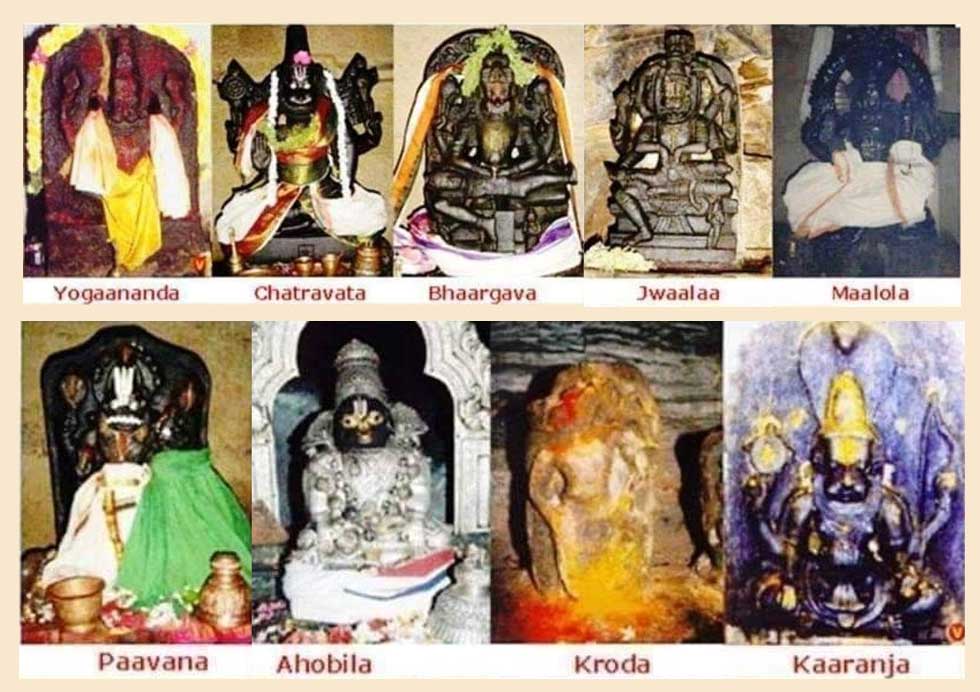
Ahobilam is home to nine temples, each dedicated to a specific form of Lord Narasimha. The sculptural magnificence and architectural grandeur of these temples stand as a testament to the ancient sthapathis’ skill in planning and crafting these divine structures. The nine forms, known as Nava Narasimhas, are worshipped to seek protection from demons and curses. The great Telugu poet Errana’s “Nrisimha Puranam” beautifully captures the essence of this divine narrative.
- Yogananda Narasimha (Shani)
- Jwala Narasimha (Kuja)
- Bhargava Narasimha (Surya)
- Chatravata Narasimha (Chandra)
- Varaha Narasimha (Rahu)
- Malola Narasimha (Ketu)
- Paavana Narasimha (Buda)
- Karanja Narasimha (Shukra)
- Ugra Narasimha (Guru)
The Pilgrimage Experience:
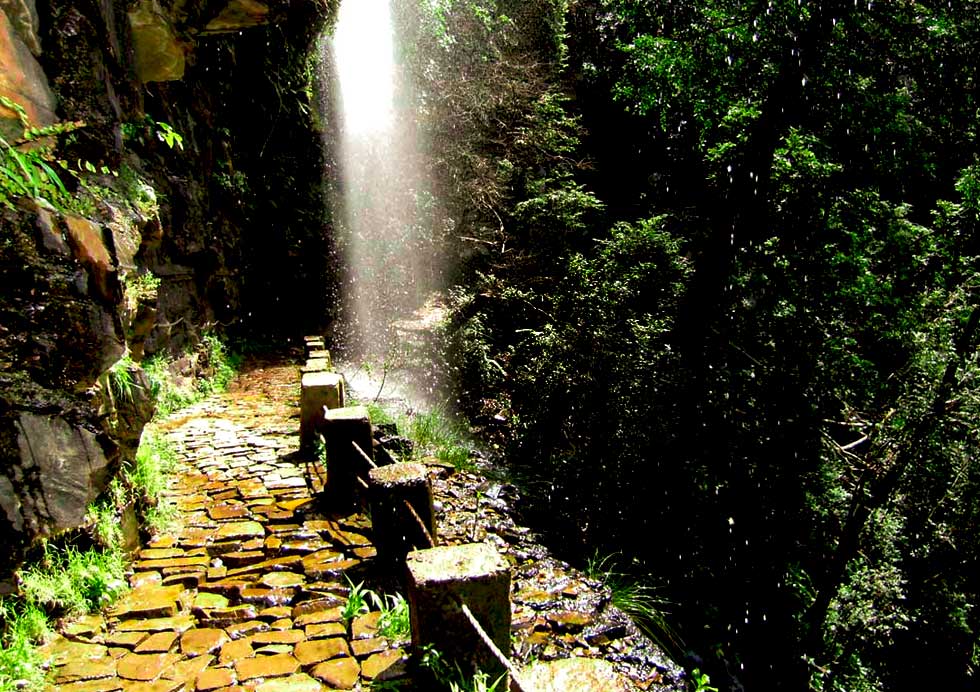
Ahobilam offers a unique pilgrimage experience, with some temples accessible only through trekking, others nestled inside caves, and a few requiring a challenging ascent. The journey to these sacred sites becomes not just a physical endeavor but a spiritual odyssey, a quest for divine blessings. The rituals, ceremonies, and the devout atmosphere create an ambiance of transcendence.
Chenchu Lakshmi and Lord Narasimha's Consort:
The narrative of Ahobilam extends beyond the intense forms of
Lord Narasimha to include the divine consort, Chenchu Lakshmi. According to the legends, after slaying Hiranyakashyapa, Lord Narasimha assumed an aggressive form and proceeded to the Nallamala forest. Concerned about this ferocious manifestation, the Devas prayed to Goddess Lakshmi, who took the form of Chenchu Lakshmi, a tribal girl in the same forest. Lord Narasimha, captivated by her presence, underwent numerous tests before she agreed to become his consort.
Location and Accessibility:
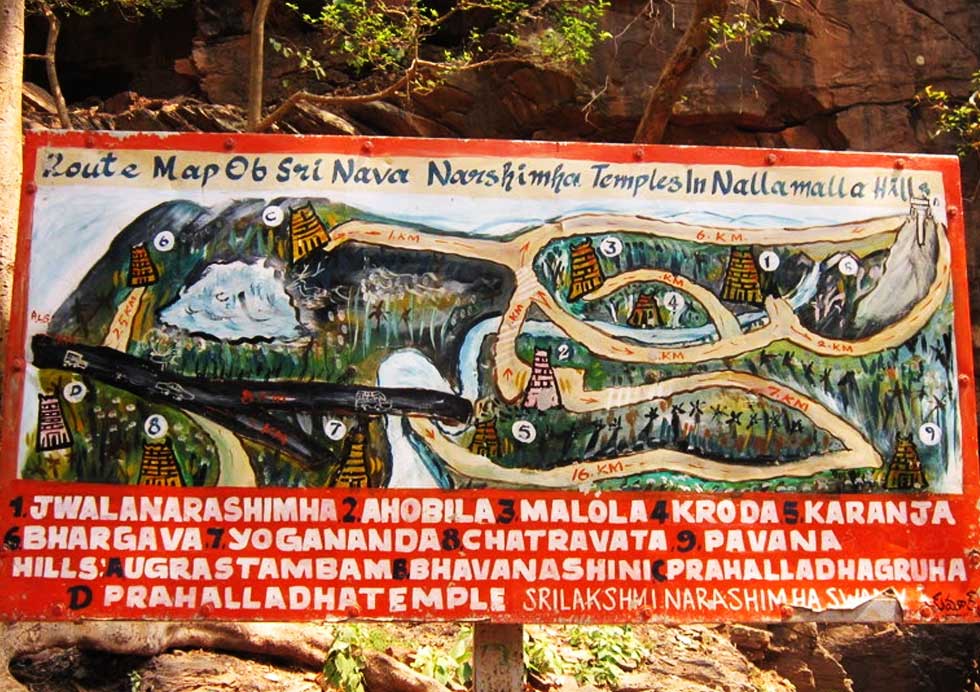
Situated approximately 70 km from Nandyal and about 150 km from Kurnool, Ahobilam is conveniently accessible by bus from Nandyal, Kurnool, and Hyderabad. While not connected by rail, the closest railway stations are Nandyal and Cuddapah. Pilgrims can reach Ahobilam through different routes, with Nandyal, Dhone, and Kadapa serving as key points.
Conclusion:
Ahobilam stands as a spiritual haven, where the divine aura of Lord Narasimha permeates the very air. The journey to this sacred abode is not merely a physical pilgrimage but a transformative experience, where devotees traverse through the realms of sacred scriptures, history, and spirituality. The ancient temples, the challenging treks, and the divine legends all contribute to the mystique of Ahobilam, making it a jewel in the crown of India’s sacred destinations. As pilgrims embark on this spiritual odyssey, they are not just exploring a physical landscape but delving into the realms of devotion, faith, and divine blessings that Ahobilam generously bestows upon those who seek its grace.
